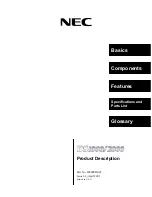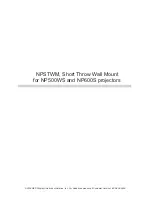
OPERATING MODE SELECTION
Using the PROG button, the user can choose one of two modes of operation:
1. Work without light sensor (the motion sensor works all the time).
2. Work with light sensor (the sensor works only when the illuminance is lower than the set thresh-
old). The trigger threshold is set in the range from 0 to 20 lx based on the current measurement
when choosing the mode with light sensor. If the currently measured level is > 20 lx, the refer-
ence value is the limit value, i.e. 20 lx.
DIRECT CO-OPERATION OF RCR-21 SENSOR
WITH SELECTED EXTA LIFE RECEIVERS
The RCR-21 sensor can operate directly with selected EXTA LIFE receivers bypassing the EFC-
01 controller. This co-operation only applies to such receivers as: ROP-21, ROP-22, ROM-22,
ROM-24. In the case of other receivers, use an EFC-01 controller and a logical function module.
NOTE: Do not cover the aperture if the mode with light sensor is selected so as not to
distort the result of illuminance measurement.
In order to programme a new threshold value, enter the operating mode programming
procedure again and select the mode with light sensor again.
OPERATING MODE SELECTION:
1. Press the PROG button for > than 1s. After pressing the button, the LEDs light up orange.
2. When the LEDs go out, release the button PROG.
3. Next, by pressing the button PROG for a short time (0.5 s), select the proper operating mode:
- the LEDs lit up red - work without light sensor,
- the LEDs lit up green - work with the light sensor.
4. After approx. 3s, the sensor will quickly blink blue and the user will exit the mode programming
procedure.
Example: Programming of RCR-21 to the first channel ROP-22
Example: RCR-21 programming for the second ROP-22 channel
SENSOR PAIRING WITH SELECTED EXTA LIFE RECEIVERS
1. Press the PROG. button for a short time (0.5s) on the receiver..
2. When the receiver enters the programming procedure of the given channel, press for a short
time (0.5 s) the PROG button in the RCR-21* sensor.
3. After pressing the PROG button, the LEDs in the sensor light up orange and then blink green,
which signals the sending of programming frames. The stage of assigning the sensor to the
receiver ends with the LEDs lighting up blue.
DISCHARGED BATTERY SIGNALLING
Battery discharge status is only signalled in the mobile
application by the icon and appropriate message dis-
played under the sensor’s name. If the sensor works
with an external supply (is placed in the PCL-21 power
cradle), information about discharged battery is not
displayed.
The need to replace the battery is signalled when its
voltage decreases to <2.1 V.
(>1s)
When the LEDs
go out, release
the button
PROG
By pressing the
button PROG for a
short time, select
the proper operat-
ing mode:
LEDs light is
red - work without
light sensor.
LEDs light is
green - work with
the light sensor.
After 3s of selection
of the operating
mode, the LEDs will
blink blue - exit from
the programming
procedure. If the mode
with light sensor is
selected, the sensor
measures the illumi-
nance during this time.
This value is taken as
the threshold value.
Press the PROG
button more
than 1s
The LEDs will
light up orange
and go out
after 1s
Press the PROG. button for a
short time (0.5s) on the receiver.
Wait a moment until the LED
STATUS lights up blue
Press the PROG. button for a
short time (0.5s) on the receiver.
Wait approx. 5s until the
STATUS LED lights up red
(programming of channel 2).
Press the PROG. button for a short time
(0.5s) on the RCR-21 as quick as pos-
sible. The LEDs in the sensor will blink
orange, green and finally blue
Press the PROG. button for a
short time (0.5s) on the RCR-21 as
quick as possible. The LEDs in the
sensor will blink orange, green and
finally blue
The STATUS LED will
blink and go out. This
means that the sensor is
correctly assigned to the
1st channel of the receiver
The STATUS LED will
blink and go out. This
means that the sensor is
correctly assigned to the
1st channel of the receiver
(0,5s)
(0,5s)
1
1
3
3
2
2



























